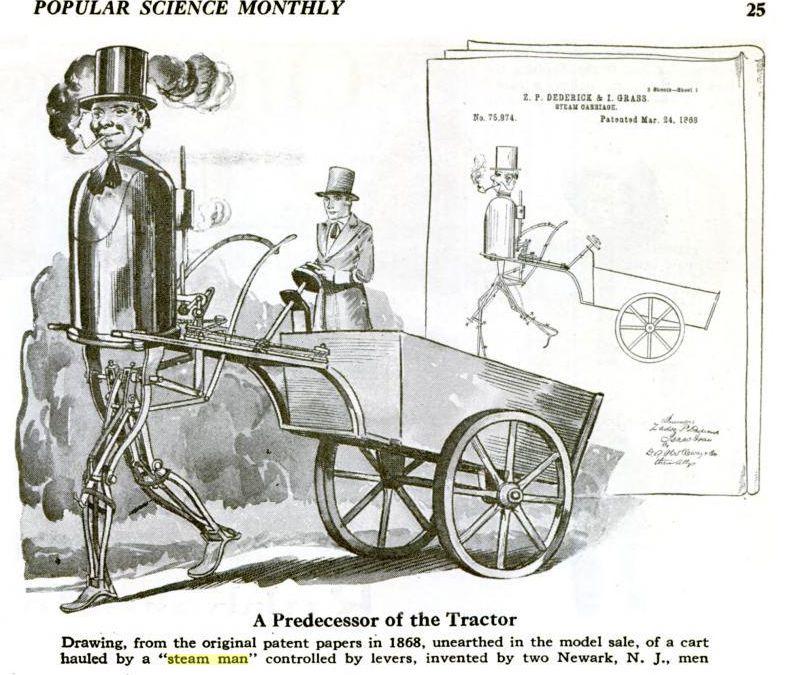The late 19th and early 20th centuries produced many imaginative illustrations of automata, “mechanical men,” and robots in the public domain. For example, L. Frank Baum’s Oz series introduced Tik-Tok, a stout clockwork man first illustrated in Ozma of Oz (1907). Tik-Tok was depicted as a round-bellied copper man with jointed limbs, requiring periodic winding – essentially a comic robot soldier in a fairyland setting.

Popular Science Monthly. Drawing from the original patent of 1868 for Steam Man of Newark by [[Zadoc P. Dederick]
In 1927, the silent film Metropolis gave the world one of the most iconic robot images: the female Maschinenmensch (machine-person) designed by Fritz Lang and portrayed in dazzling Art Deco style.
Brigitte Helm’s robot Maria – brought to life by mad science – was shown in publicity stills as a shining human-shaped automaton, arguably the most famous early cinema robot. (Still photographs of the Metropolis robot are now public domain in the US, as the film’s copyright has expired.)
These broader cultural depictions, from magazine illustrations to film posters, enriched the visual vocabulary of robots.
By the mid-20th century, popular imagination had firmly established what a “robot” looked like – often metallic, humanoid, and born from human ingenuity. All these public domain images, whether tied to specific stories or more general, capture the evolving fascination with artificial people: from steam-powered Victorian contraptions to artfully rendered automatons and early science-fiction robots. Each is a window into how our ancestors imagined the mechanical beings that we now call robots.
# See
- Scifi Robots and onetab ![]() - Metropolis and Early Robot Illustrations
- Robots of the World! Arise! and Mari Wolf
- The Steam Man and The First Robot
- Zadoc P. Dederick and Steam Man of Newark
- Metropolis and Early Robot Illustrations
- Robots of the World! Arise! and Mari Wolf
- The Steam Man and The First Robot
- Zadoc P. Dederick and Steam Man of Newark